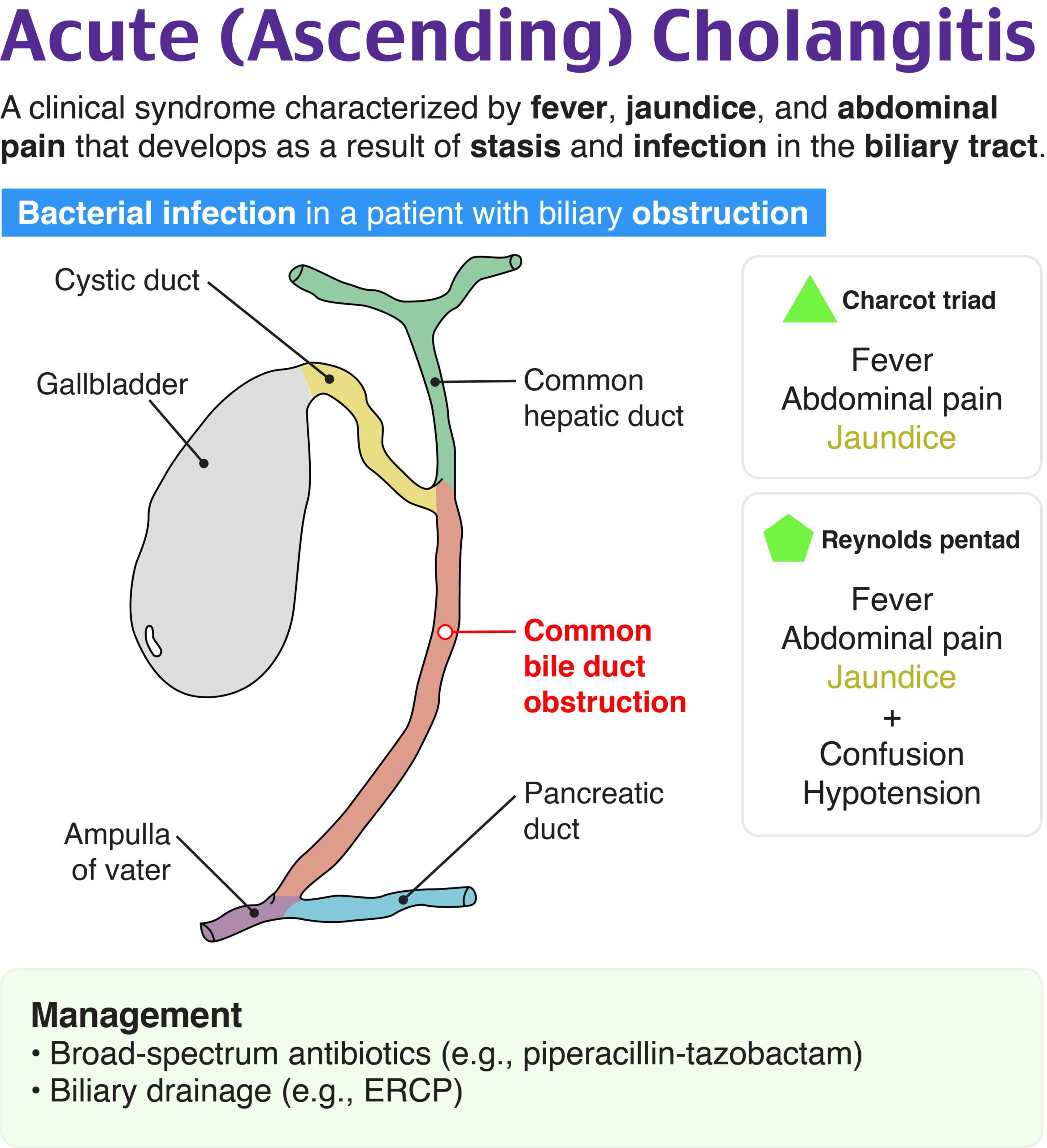Equip yourself for success on the PANRE or PANRE-LA with 2,000 NCCPA-formatted questions including 100 AMA PRA Category 1 Credits™.
Aligned with the NCCPA format and updated blueprint. Authored & peer-reviewed by PA-Cs.
Each question is written to resemble the format and topics on the exam, meaning you won’t see any negatively phrased questions, no “all of the following except,” no “A and B”…you know what we mean. Most importantly, all questions include selective distractors (incorrect answer choices), which will help you think critically.
The patient presents with severe (suppurative) ascending cholangitis and requires biliary decompression with endoscopic retrograde cholangiopancreatography (ERCP). Ascending (or acute) cholangitis is a bacterial infection of the biliary system and is most frequently associated with common bile duct stones and obstruction. The disease classically presents with the Charcot triad (fever, jaundice, and right upper quadrant pain). However, only 50–75% of patients present classically, so clinicians must maintain a high index of suspicion for this life-threatening condition. While administration of broad-spectrum… Read More
Understanding why an answer choice is incorrect is just as important as knowing why one is correct. That’s why every Rosh Review question includes detailed explanations for the correct and incorrect answer choices. These comprehensive summaries link the most important components of a topic—from risk factors to diagnostics and treatment—giving you the context to build relationships between them.
Custom illustrations and tables help further clarify the core concepts. When information is presented visually, you can focus on meaning, easily reorganize and group similar ideas, and make better use of your memory.

Your personal analytics allow you to see your progress at all times, so you can create an efficient and effective learning strategy and stay on pace with your plan.
After each explanation is a straightforward question with a simple, memorizable answer that reinforces the corresponding topic.
What is the recommended initial therapy for patients with primary biliary cholangitis?
Acute Cholangitis
These bulleted reviews focus on condensed, high-yield concepts about the main topic, from patient presentation to preferred management.
“I just received comfortably above passing score on the Initial Certification Exam! When I started using Rosh Review last year for the In-Service, my scores started rising considerably. Thanks again!”

Matthew DeAugustinis, MD
Attending Physician